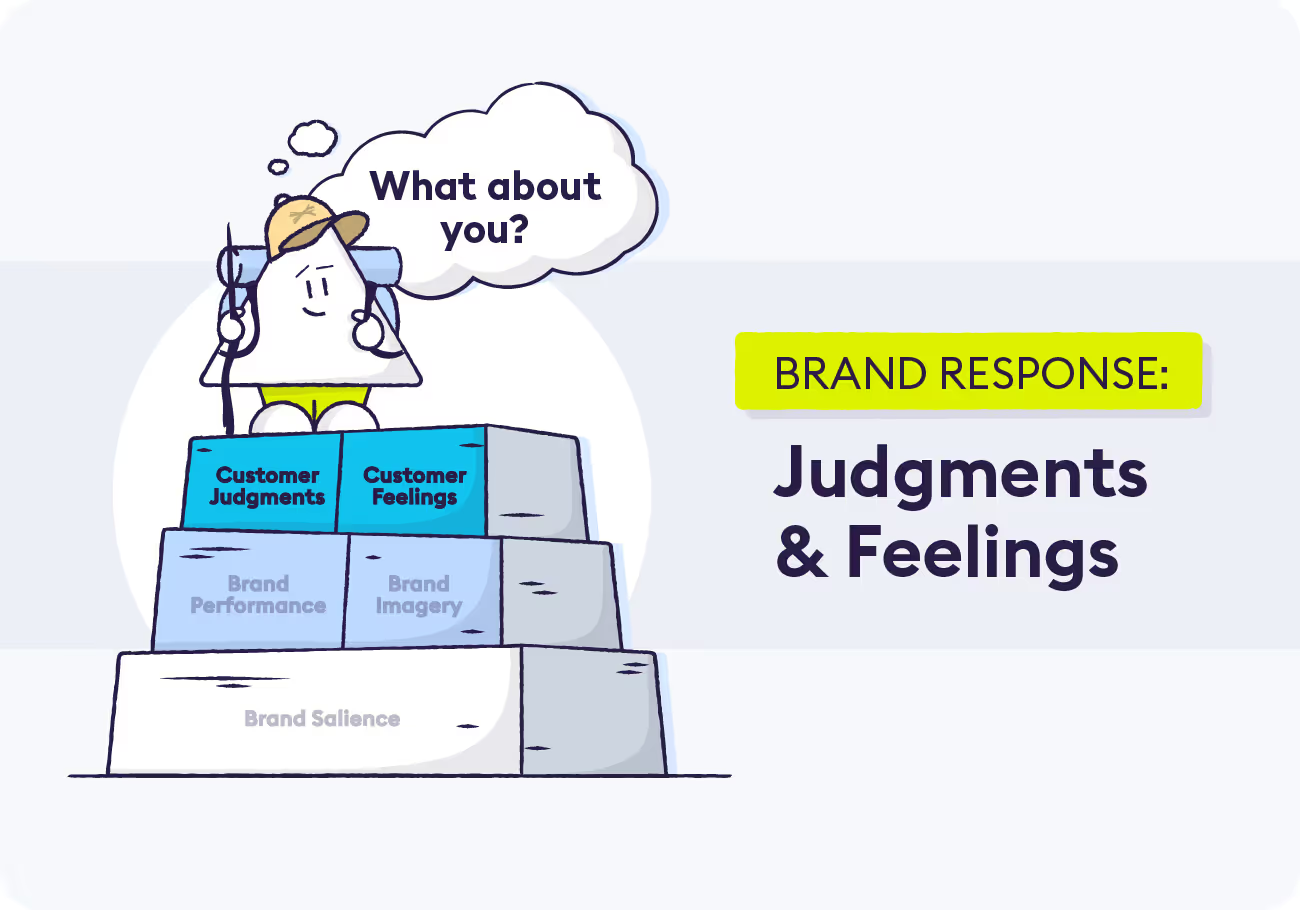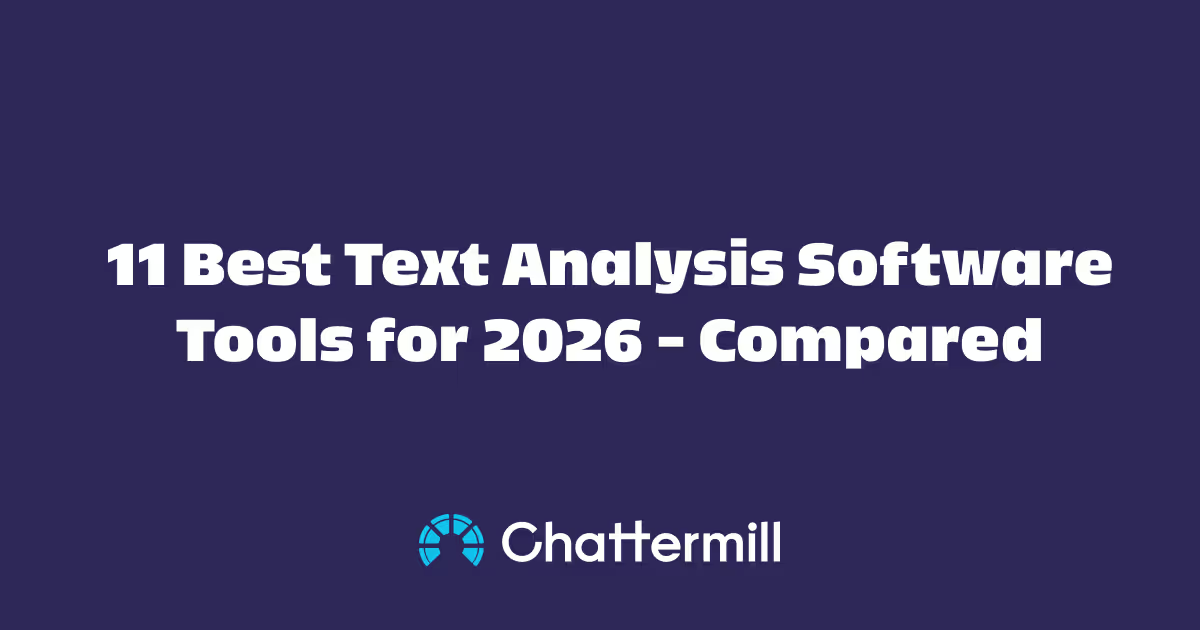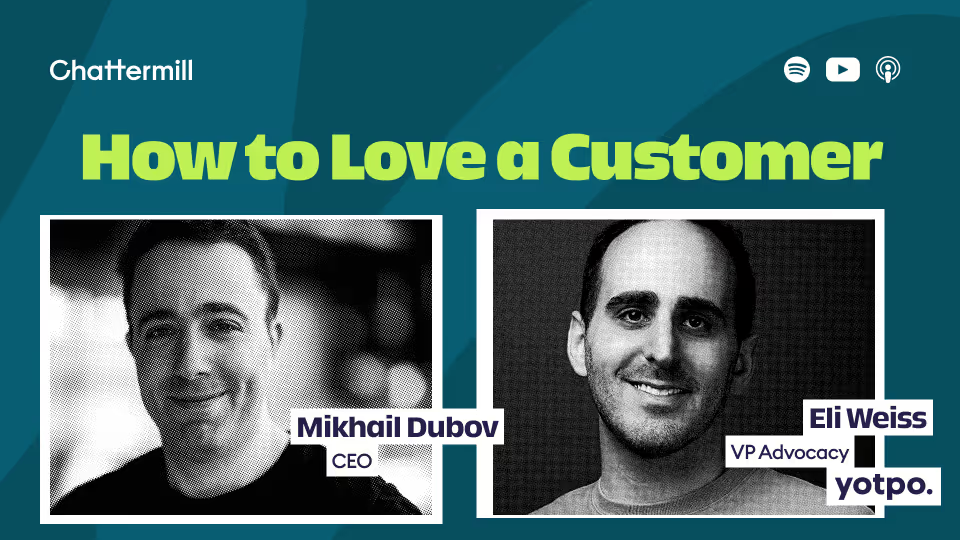For over two decades, Professor Kevin Lane Keller’s brand equity pyramid has been the standard for understanding and measuring CBBE (customer-based brand equity). First published in his widely-used textbook Strategic Brand Management in the late 1990s, marketing students and enterprise brands alike continue to utilize the brand equity pyramid to better connect with their audience, generate a loyal customer base, and increase profits.

Below we’ll dive into each section of Keller’s CBBE model to provide actionable tips and takeaways, along with explaining the connection between customer-based brand equity and customer experience analysis.
What is Brand Equity?
“Brand equity” is the value a brand has based on its level of name recognition. Well-known brand names such as Starbucks, McDonald’s, and Apple have high brand equity, while brands that aren’t as well-known have lower brand equity. Brand equity is usually generated through word-of-mouth recommendations, and customers typically believe that products with more brand recognition are superior to unheard of brands.
Over the last decade, brand equity has become increasingly important as the proliferation of social media and online advertising has allowed brands to communicate with their customers on a more personal level. The marketing landscape has shifted to become more relationship-based, and because brand equity is difficult to quantify, Keller’s CBBE model remains popular for its simplicity and ease-of-use.
Breaking Down Keller’s Brand Equity Pyramid
The basic concept behind the CBBE model is easy to understand: brands have to understand how their customers feel about their product and shape the customer journey to have specific, positive experiences. In this way, brands can build their brand equity through word-of-mouth marketing and gain a loyal customer base.
Below we break down each section of the brand equity pyramid from the ground up.
Phase 1: Brand Identity

The foundation of the brand equity pyramid is brand identity, and it is imperative to build a strong foundation before moving into the upper stages of the pyramid. The key term to think about at this stage is salience. You need customers to know who you are and what makes you unique. The question to constantly ask yourself at this stage is “Who are you?”
What You Can Do: If you’re starting out as an unknown name in the industry, the first thing you should do is identify your unique selling point. What makes you stand out from your competitors? What need are you filling that other companies can’t? The best way to do this is to conduct in-depth market research about your ideal customers and their purchasing journey.
Put yourself in your customers’ shoes: would you have a reason to choose your brand above the competition? If not, adjust your offerings to better meet their needs. The next step to take is to make sure your customers know who you are and understand your unique value. Start targeting your customers with ad campaigns on Google Search, social media, or other channels where your ideal buyers would be found.
An example of this pyramid stage is the skincare and cosmetics company Glossier. What began as a blog about women’s beauty routines has turned into one of the most well-known “unicorn” startups in the industry, valued at $1.2 billion with three permanent retail spaces. Glossier founder Emily Weiss was able to identify a unique selling point for her brand (prioritizing quality, simplified skincare before makeup) through her own experience in the beauty industry and by engaging with customer conversations on social media. She developed brand salience with her target customers through strategic, innovative Instagram campaigns.
Phase 2: Brand Meaning

The next step in the brand equity pyramid is brand meaning. As noted previously, each stage of the pyramid builds upon itself, so it’s important to solidify each step before moving on to higher stages. The key to identifying your brand’s meaning is to ask yourself “What are you?” While the previous stage was all about figuring out your unique role in the marketplace and letting customers know who you are, this stage is about how your product makes people feel.
This section of the pyramid is divided into two parts to reflect the “rational route” and the “emotional route” that customers can take:
- Performance: Does your product perform as expected? Does it meet, or even better, exceed customer expectations? Performance encompasses all practical areas of a product, from the ease of purchase, reliability of the product, and customer service throughout the journey.
- Imagery: How does your brand appeal to customers on an emotional level? Does it meet or exceed expectations in terms of branding and social media presence? In today’s marketplace especially, customers have very high needs when it comes to a brand’s online presence.
What You Can Do: The first step is to analyze if your product is living up to what you promised. If you’re having a lot of item returns, refunds being issued, negative customer reviews, or any other number of negative responses, there is a clear issue that your product isn’t meeting customer expectations. You should also identify areas where your offerings can be improved to exceed expectations - whether it’s a birthday discount or free samples, small value ads can make a big difference to customers.
You should also analyze your branding and online presence to make sure it’s accurately conveying what using your product will feel like. Again, put yourself into a potential customer’s shoes. Would they be excited about your product if they came across your website or social media profiles? Is your imagery either over or under-delivering on the actual product? These two aspects of performance and imagery must match to create a cohesive brand experience.
A good example of this is the meal delivery service HelloFresh. One of the first on the ingredient delivery scene, HelloFresh remains a mainstay for easy, chef-inspired, home cooked meals. Their branding is simplistic but still eye-catching; fun, family-friendly, and full of bright, high-quality photos of prepared meals which well represents their actual product.
The delivery box itself is clearly a high-performer and meets customer expectations, as the service has been around for nearly ten years and earned over $1.3 billion in 2018. Hello Fresh also offers returns and refunds for any part of the meal kit that a customer isn’t happy with.
Phase 3: Brand Response

Phase 3 is all about brand response. To get at the core of this step, put yourself in the place of your customer once more and ask yourself “What about you?” or “What do I feel about the brand?” The goal of this stage is to respond to customers’ reactions in Phase 2 and encourage them to become brand advocates that will spread your product or service through personal recommendations.
Once again, this stage is divided into two parts to represent the “rational route” and the “emotional route” that customers can take on their journey:
- Judgments: Consumers are constantly making judgments about your product or service throughout the customer journey. Based on your social media presence, customer service capabilities, the accuracy of targeted ad campaigns, and of course, the actual product, customers are evaluating whether your brand is the best choice for them. They base these judgments on if your product is high-quality, meets their specific needs, and if it’s better or worse than competitor products, along with many other factors.
- Feelings: Along with judgments, consumers are basing their purchasing decision on how your product makes them feel, both in terms of the product itself and how it reflects on them. Will spending money on your product make a consumer feel excited and happy with their purchase? Or will they feel disappointed and embarrassed about buying a sub-par product?
What you can do: Analyze customer feedback to determine where your product is failing customer judgments, and take steps accordingly. Sources for customer feedback could be tools like Freshdesk or Zendesk, NPS surveys, or online reviews. These channels are rich with insights to gather customer sentiment at scale. By utilizing these feedback sources, you might find hidden gems that allude to certain parts of your customer journey or products that are affecting opinion of your brand. You’ll have a good starting point to determine failing customer judgment points and where you’re not meeting expectations.
Try our online customer insight tagger now with a sample comment to see firsthand how we can analyse your feedback at scale.
A recent example of a brand successfully pivoting at this point in the brand equity pyramid is pizza chain Domino’s. After years of flagging profits, Domino’s realized they needed to do something big to recover their customer base.
By understanding how they were failing customer judgments and feelings (namely, poor delivery times and terrible pizza), they completely re-launched their product with the infamous ad campaign “worst pizza I ever had.” After successfully changing both their pizza recipe and shifting focus to tech-backed delivery methods, today Domino’s is the second-largest pizza chain in the world.
Phase 4: Brand Relationships

At the top of the brand equity pyramid is brand relationships, also known as brand resonance. To understand this coveted stage, ask yourself “What about you and me?” or “How much would I like to continue this relationship?” At the top of the pyramid, this is the most difficult, yet the most valuable brand equity stage, when a customer has truly become a brand advocate.
Customers who reach this stage value your brand above all other competitors, would not consider buying from another brand, and actively recommend your brand to other consumers. In addition to being a repeat customer, people who feel a resonance with your brand will likely have a connection to other brand advocates, and may even join a community associated with your brand, such as a club or social media group.
What you can do: Once you have loyal customers at the top of the brand equity pyramid, you should do everything you can to keep them there. Take actions to keep them engaged and loyal, such as member-only discounts, free gifts for frequent purchasers, access to industry-specific events, or other exclusive rewards. For example, online shoe retailer Zappos often surprises customers with free shipping upgrades and delivering products ahead of schedule.
One of the most apparent examples of a brand with high customer resonance is Apple. Since the launch of iPods in the early 2000s, and even more so since the first iPhone was released in 2007, Apple has generated a cult following. Apple is a master at engaging with its community of users and creating products that are fine-tuned to address what their customers value most, and there are a plethora of online communities dedicated to discussing Apple products.
We’ve finally reached the apex of the pyramid with cultivating brand resonance. Take a look at the infographic below for a visual summary of each stage of Keller’s brand equity pyramid:

How CX and AI-Powered Text Analytics Work With the Brand Equity Pyramid
As we alluded to in Phase 3, gathering customer feedback at scale is the most accurate way to progress through the brand equity pyramid. At every stage, your brand will rely on the perception and feedback from potential customers in order to understand if your efforts are truly on track to reach brand resonance.
This type of technology allows you to see gaps in the customer journey and take action at each stage of the pyramid by analyzing what customers are saying about your brand. And as your brand grows and you move up the pyramid, you’ll need the capability to scale your customer feedback efforts and improve and track retention.
To get started on your brand equity journey and understand how consumers view your brand, try our tool and start analysing feedback hassle free.
Brand Equity Pyramid: FAQs
What is the brand equity pyramid?
The brand equity pyramid, also known as Keller’s model, shows how brands build equity step by step from awareness to deep loyalty. The goal is to reach brand resonance, where customers feel connected and advocate for the brand.
What are the levels in Keller’s pyramid?
The model has four stages: brand identity, brand meaning, brand response, and brand resonance. Each stage is built on six building blocks including salience, performance, imagery, judgments, feelings, and resonance.
How do you apply the pyramid in practice?
Brands assess where they stand in each layer and then strengthen weaker areas before moving up. This creates a roadmap for brand-building activities and helps focus investment.
How is brand equity different from brand value?
Brand equity reflects how consumers perceive and connect with a brand, while brand value is the financial worth those perceptions create. Equity shapes demand and pricing power, while value shows up on the balance sheet.
How does Keller’s model compare to Aaker’s or BAV?
Aaker emphasizes brand assets like awareness, associations, and loyalty, while BAV looks at differentiation, relevance, esteem, and knowledge. Keller focuses on the customer’s perspective, mapping the journey toward deep connection.
How do you measure progress at each level?
Measurement can include brand tracking surveys for awareness, performance attributes, emotional associations, and loyalty indicators. Repeated tracking over time shows whether brand-building efforts are paying off.















